 Since its initial publication in Berlin in 1928, Jan Tschichold's The New Typography has been recognized as the definitive treatise on book and graphic design in the machine age. At once a key theoretical document of Central European modernism between the world wars and an invaluable source of working principles for the practicing designer, this classic work enjoys the reputation among book artists that Le Corbusier's Toward a New Architecture has long held among architects. 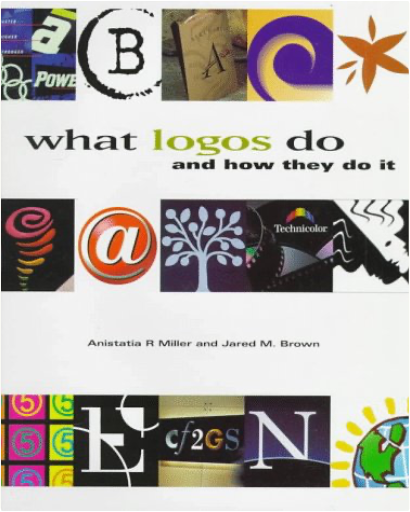 Logos are one of the most succinct forms of advertising and one of the greatest challenges of graphic design: besides being immediately recognizable, logos must convey a big message in a small space. The best logos are striking, symbolic brands that cut through language by employing shape and color as their main communication tools. What Logos Do and How They Do It presents twelve case studies and hundreds of examples of current logos that have met with great success. An essential for both novice and professional designers, this book illuminates the logo design process and explains what makes each logo work for its market. 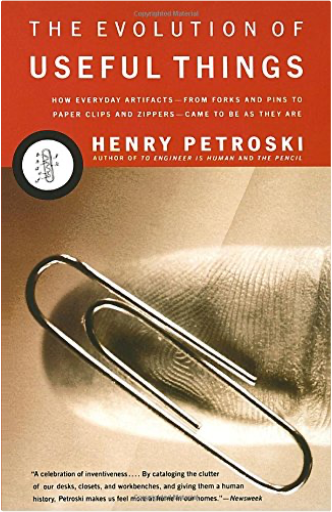 How did the table fork acquire a fourth tine? What advantage does the Phillips-head screw have over its single-grooved predecessor? Why does the paper clip look the way it does? What makes Scotch tape Scotch? 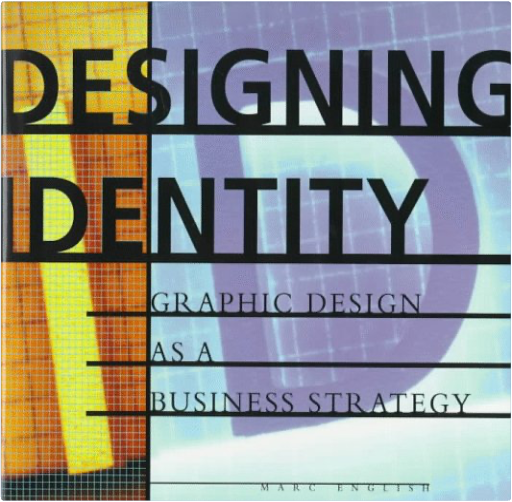 Profiled here are nine case studies, each providing insight into a specific business arena, and the unique role design plays in developing an identity as part of a strategy for success. Some of the best designers in the field today will explain their process in creating identities, from initial client meetings and planning, through logo development and a wide variety of identity applications. Additionally, a showcase of identity projects, from local ventures to national enterprises, further details the objectives of client and designer. 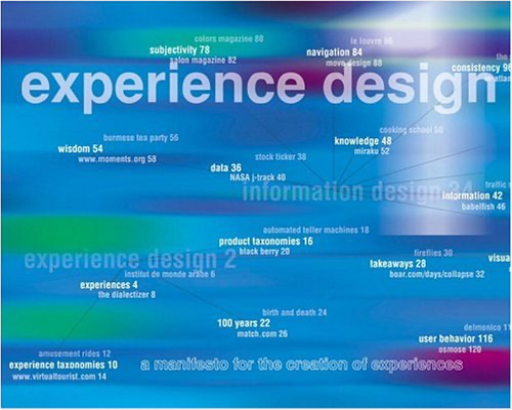 With Experience Design, Nathan Shedroff has designed and written a book for those in the digital and related design professions, especially those creating online and interactive media who are looking for core inspiration and meaning in their work. This is a book directly at the intersection of today's design disciplines - interaction design, information design, visual design, and more. Shedroff provides not only a way of designing online experience, but also, and more importantly, an approach to all design, whether it be of products, services, environments, or events. Read cover-to-cover, Experience Design is a kind of textbook that presents theories and examples. Opened to any page at random, it is a source of inspiration that challenges your thinking about your creative work. 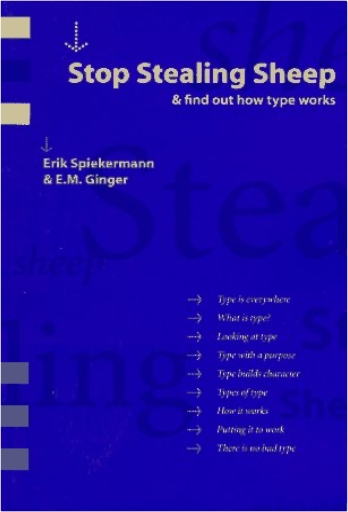 Frederic Goudy, American type designer, once said, "Anyone who would letterspace lower case would steal sheep." To most people, this comment only adds to the perception that type inhabits a mysterious world with intricate terminology and elaborate rules; added to this are thouasands of type faces out there that all seem to look alike. Until now, Spiekerman and Ginger shepherd their decades of typograhpic experience into a unique and lively guidebook which shows that type is easy to use, easy to understand, and in the hands of a savvy user, a powerful communications tool. You need no previous knowledge of typography to enjoy Stop Stealing Sheep. It makes no difference what kind of computer you work on, what type of software you use, or what you do for a living, because as the authors show- type, good type -reaches across all boundaries, computer platforms, and professional distinctions. 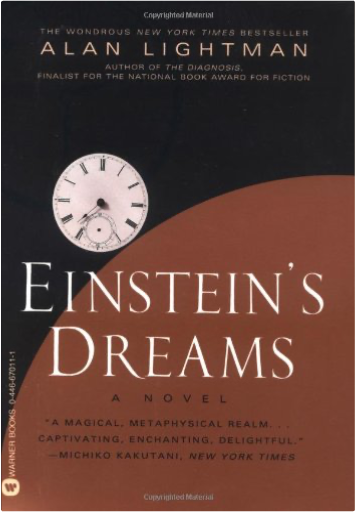 In this provocative national bestseller, first-time novelist Lightman takes us back to 1905 and into the dreams of a young patent clerk named Albert Einstein, just as he was completing his theory of relativity. "Lightman lets the reader in on the workings of a creative scientific mind".—Kirkus Reviews. | 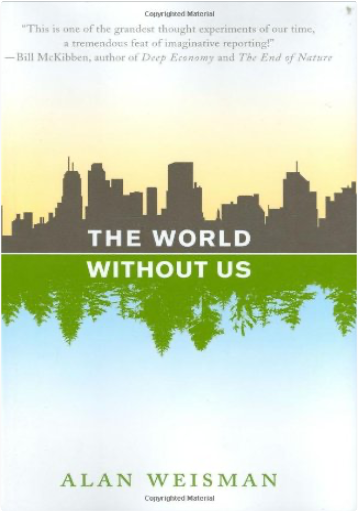 A penetrating, page-turning tour of a post-human Earth  Expanding on his theory that the gene is the basic unit of evolution, the author of The Selfish Gene explains how genes meet, compete, unite, and separate to form new species. National ad/promo.  The Control of Nature is John McPhee's bestselling account of places where people are locked in combat with nature. Taking us deep into these contested territories, McPhee details the strageties and tactics through which people attempt to control nature. Most striking is his depiction of the main contestants: nature in complex and awesome guises, and those attempting to wrest control from her - stubborn, sometimes foolhardy, more often ingenious, and always arresting characters.  Alfred North Whitehead's SCIENCE AND THE MODERN WORLD, originally published in 1925, redefines the concept of modern science. Presaging by more than half a century most of today's cutting-edge thought on the cultural ramifications of science and technology, Whitehead demands that readers understand and celebrate the contemporary, historical, and cultural context of scientific discovery. Taking readers through the history of modern science, Whitehead shows how cultural history has affected science over the ages in relation to such major intellectual themes as romanticism, relativity, quantum theory, religion, and movements for social progress. 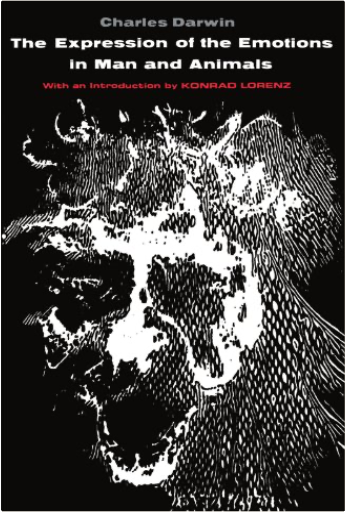 Darwin's work of 1872 still provides the point of departure for research in the theory of emotion and expression. Although he lacked the modern research tool of cybernetics, his basic methods have not been improved upon: the study of infants, of the insane, of paintings and sculpture, of some of the commoner animals; the use of photographs of expression submitted to different judges; and the comparative study of expression among different peoples. This new edition will be warmly welcomed by those behavioral scientists who have recently shown an intense interest in the scientific study of expression. Lay readers, too, will be struck by the freshness and directness of this book, which includes, among other data, Darwin's delightfully objective analysis of his own baby's smiles and pouts.  Since cyberspace became reality, the lines between "science" and "science fiction" have become increasingly blurred. Now, quantum mechanics promises that some of humanity's wildest dreams may be realized. Serious scientists, working from Einstein's theories, have been investigating the phenomenon known as "entanglement," one of the strangest aspects of our strange universe. According to Einstein, quantum mechanics required entanglement — the idea that subatomic particles could become linked, and that a change to one such particle would instantly be reflected in its counterpart, even if separated by a universe. Einstein felt that if quantum theory could produce such bizarre effects, then it had to be invalid. But new experiments show that not only does it happen, but that it may lead to unbreakable codes, and even teleportation, perhaps in our lifetime.  "Dazzling...A feast. Absorbing and elegantly written, it tells of theorigins of life on earth, describes its variety and charaacter, and culminates in a discussion of human nature and teh complex traces ofhumankind's evolutionary past...It is an amazing story masterfully told." |

library 101720
Collection Total:
1,127 Items
1,127 Items
Last Updated:
Oct 17, 2020
Oct 17, 2020

 Made with Delicious Library
Made with Delicious Library